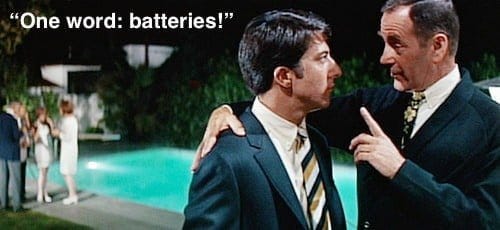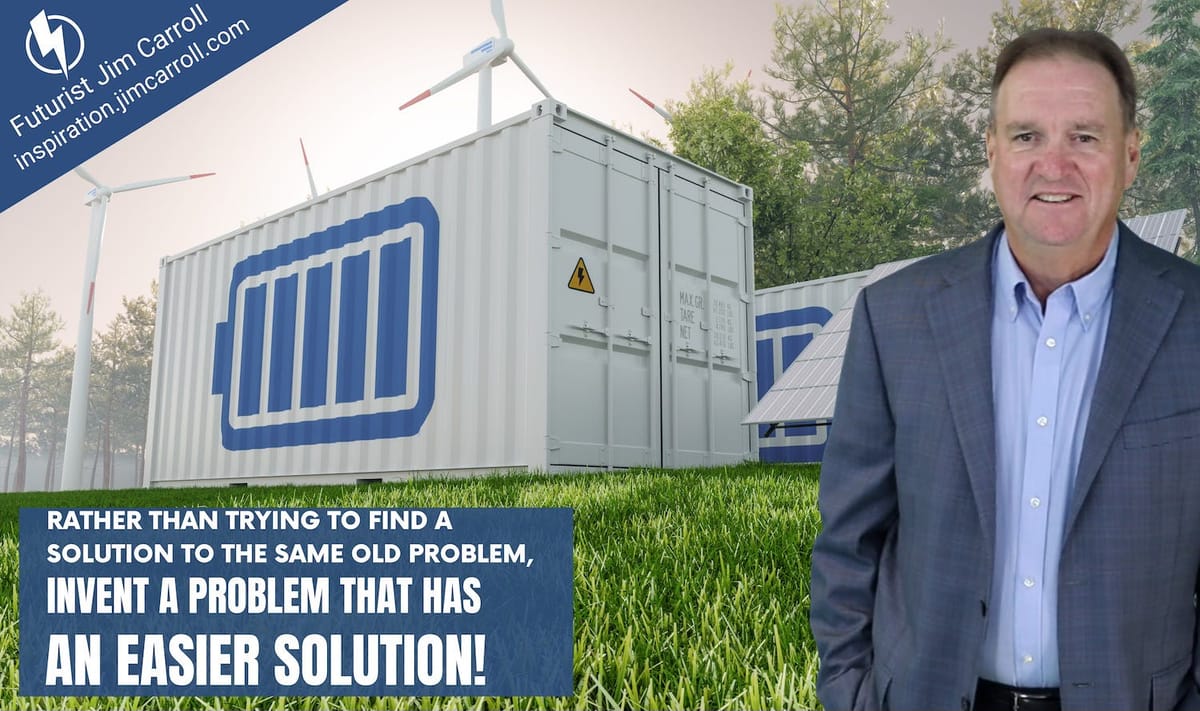
The future of just about everything is all about the batteries.
That's the post I wrote six years ago when I took a look at the trends involving battery science technology, and its impact in the energy, automotive, and other sectors. I emphasized the post with a simple, to-the-point image. Oldsters will get it.

That's why an article in the New York Times yesterday drew my attention, noting that a utility in Vermont plans on solving the issue of having to deal with an increasing number of power outages by ... not having to deal with an increasing number of power outages. Their solution? Rather than stringing and fixing more utility lines, let's give the customers batteries to store energy for use in these situations!

Talk about turning your problem upside down by inventing a new and different problem!
Green Mountain Power is asking state regulators to let it buy batteries it will install at customers’ homes, saying doing so will be cheaper than putting up more power lines.
Many electric utilities are putting up lots of new power lines as they rely more on renewable energy and try to make grids more resilient in bad weather. But a Vermont utility is proposing a very different approach: It wants to install batteries at most homes to make sure its customers never go without electricity.
The company, Green Mountain Power, proposed buying batteries, burying power lines and strengthening overhead cables in a filing with state regulators on Monday. It said its plan would be cheaper than building a lot of new lines and power plants.
The plan is a big departure from how U.S. utilities normally do business. Most of them make money by building and operating power lines that deliver electricity from natural gas power plants or wind and solar farms to homes and businesses. Green Mountain — a relatively small utility serving 270,000 homes and businesses — would still use that infrastructure but build less of it by investing in television-size batteries that homeowners usually buy on their own.
“Call us the un-utility,” Mari McClure, Green Mountain’s chief executive, said in an interview before the company’s filing. “We’re completely flipping the model, decentralizing it.”
Vermont Utility Plans to End Outages by Giving Customers Batteries
New York Times, October 9, 2023
The article caught my interest not just because it covers a trending topic I often delve into - the future of energy and utilities - but also touched on the whole idea of the power of innovative thinking. Indeed, I often suggest that people approach the idea of solving big challenges by turning those challenges upside-down. I will often write about the idea of turning innovative strategies upside down by focusing on what I call 'customer-oriented innovation,' such as this observation from a keynote I did for the Firefighter Apparatus Manufacturing Association.
I love what Green Mountain Power did here - rather than trying to solve the same old problem, it turned things around and invented a completely new problem that might be more challenging in concept, and yet in the long run, might be easier to solve! Now it simply needs to source a supply of batteries, rather than the never-ending process of stringing more lines and fixing lines during an inevitable increase in the number of storms. It also ties into the emerging trend within the world of energy that aligns with the acceleration of local renewable technology and the emergence of local-energy microgrids.
There is powerful guidance for you in their thinking - what intractable, overwhelming problems might you be able to more easily solve if you simply turn them around and make them into a new problem? That's innovation - and that's a powerful way to align yourself to a new and different future.
Futurist Jim Carroll coined the idea of 'upside down innovation' when he was invited into Disney for a talk on the core principles of creativity in a fast-moving world.
Thank you for reading Jim Carroll's Daily Inspiration. This post is public so feel free to share it.

